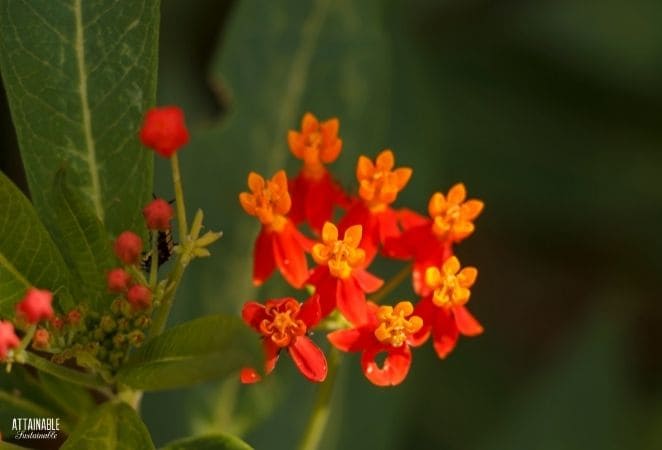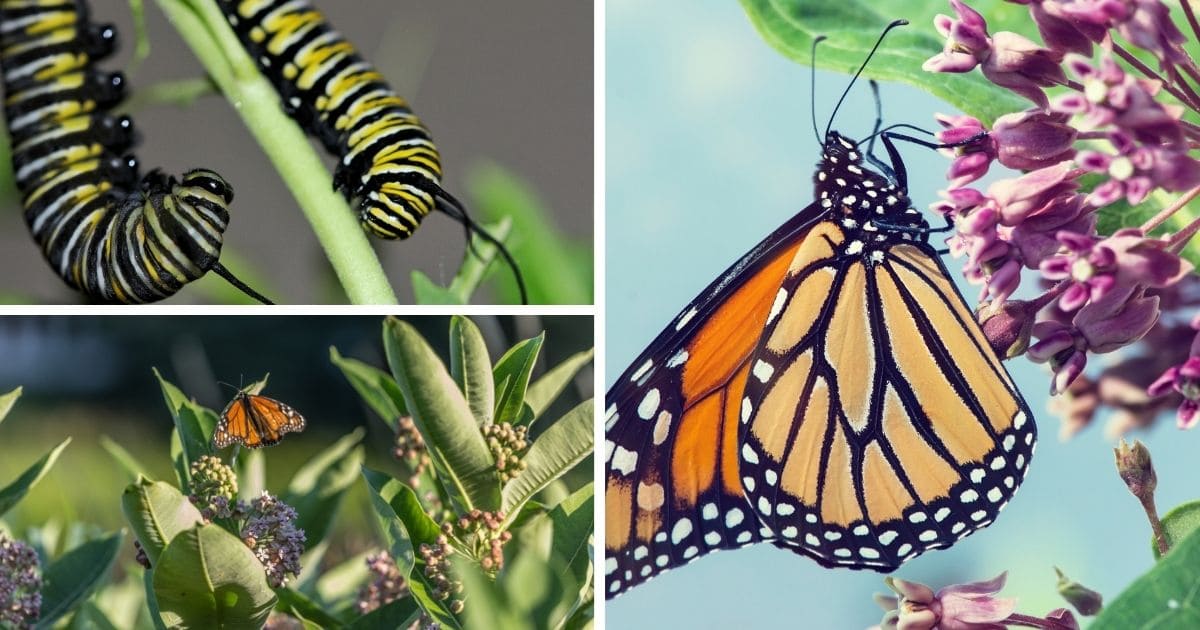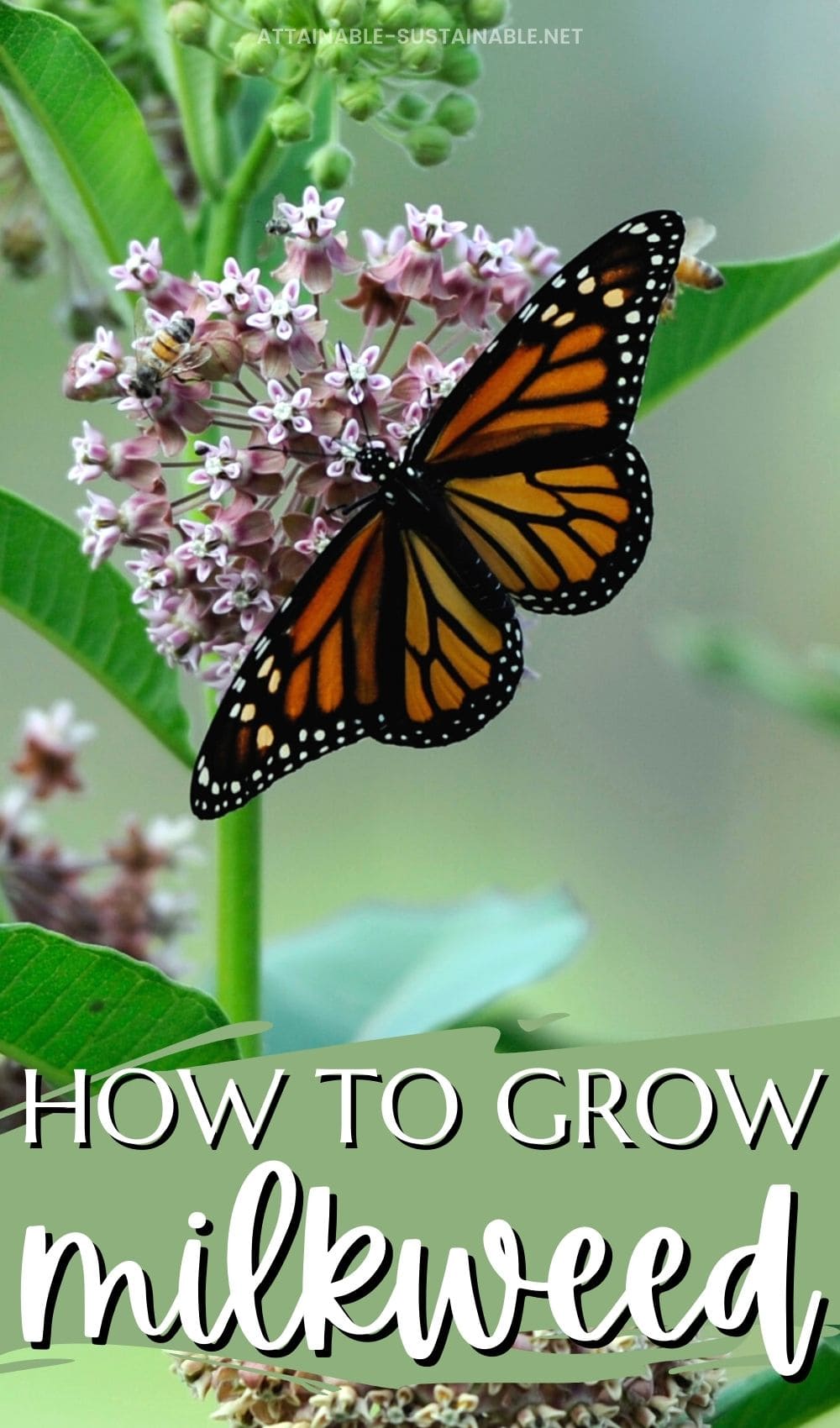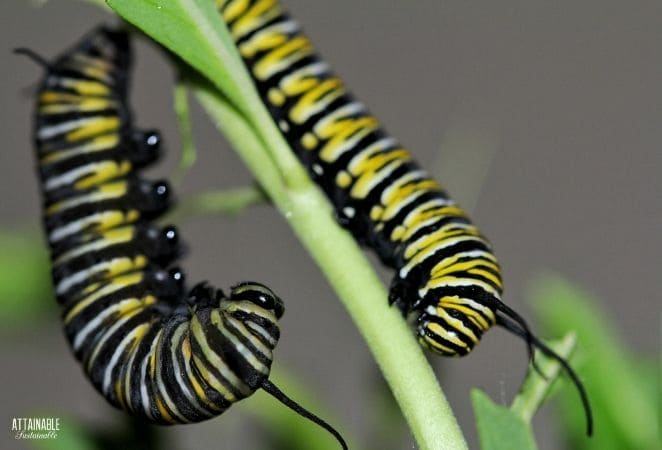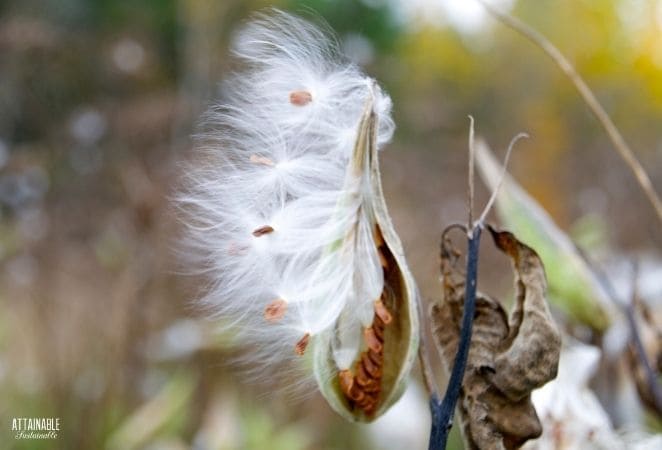Despite the “weed” in its name, milkweed is a valuable native wildflower for gardeners and conservationists alike. Consider growing milkweed to encourage butterflies to take up residence in your garden!
Read about more pollinator friendly plants here.
Contributed by Jodi Torpey, author and Master Gardener.

Milkweed has a long history that dates to prehistoric times when the plant fibers were used for making textiles and twine long before cotton was cultivated.
These days milkweed is important because it’s the only host plant for the larvae of monarch butterflies. The ongoing effort to protect monarch butterflies means planting more milkweed for butterflies to lay their eggs and feed their young. Monarchs can’t continue without milkweed, but the plant is losing ground across the country
That’s why there’s a push for more people to plant milkweed in their landscapes. Planting and growing milkweed helps monarch butterflies, but many other pollinators benefit too because of its nourishing nectar.
Grow Some Greens!
Ready to grow fresh greens, no matter WHERE you live? Sign up for my
FREE quick-start guide and start growing some of your own food!
Growing milkweed
Milkweed isn’t considered an invasive plant, but it can spread and can even take over a garden space. Keep this in mind and plant milkweed where its spreading nature this won’t be a problem, such as a butterfly garden, meadow garden, natural prairie-type garden or other informal garden.
The best way to enjoy milkweed’s wild side is to place plants where they won’t overgrow tight borders, compete with other perennial plants, or be a challenge to well-groomed flower beds.
In general, milkweed plants can grow 2-5 feet tall and just as wide. Flowers typically bloom from late spring into fall, and may take one season before the first flowers appear. It’s important to plant as many milkweed plants as your space will allow to help the monarch butterflies find this important food source in your garden.
Another consideration for planting milkweed is that plants do contain toxins in their milky sap that can be harmful to pets and people. However, milkweed is said to taste terrible and animals usually steer clear. Protect yourself from the sap by wearing gloves when working with milkweed and be sure to keep children away from plants, too.
Many milkweed species
There are more than 100 species of milkweed native to the U.S., and most will grow just about anywhere. However, experts recommend planting the ones that are specific to your region. A good resource for finding the right milkweed seeds is on the Xerces website.
The Monarch Joint Venture website lists six distinct regions of the country and the matching milkweed species to grow in each region to help migrating monarchs find food.
Here are the regions and examples of the milkweed species recommended for each:
Northeast Region: Common Milkweed (Asclepias syriaca), Swamp Milkweed (Asclepias incarnata) and Butterfly Weed (Asclepias tuberosa).
South Central Region: Green Antelopehorn Milkweed (Asclepias viridis), Antelopehorn Milkweed (Asclepias asperula) and Zizotes Milkweed (Asclepias oenotheroides).
Southeast Region: Butterfly Weed (Asclepias tuberosa), Whorled Milkweed (Asclepias verticillata) and White Milkweed (Asclepias variegata).
Western Region: Mexican Whorled Milkweed (Asclepias fascicularis) and Showy Milkweed (Asclepias speciosa).
Arizona: Butterfly Weed (Asclepias tuberosa), Antelopehorn Milkweed (Asclepias asperula) and Arizona Milkweed (Asclepias angustifolia).
California: Mexican Whorled Milkweed (Asclepias fascicularis), Desert Milkweed (Asclepias erosa) and California Milkweed (Asclepias californica).
How to plant milkweed
Milkweed can be planted either from seeds sown in the soil or seeds started to grow transplants. You may also be able to find milkweed plants at a native plant nursery or independent garden center.
Prior to planting, look for a permanent spot for your milkweed garden. Once plants grow and mature, they’re hard to move around the landscape. Allow for enough space to let plants follow their nature and spread themselves around the site. If you’re concerned about how the plants will look in your landscape, plant them in an area that’s away from other more formal planting beds.
To prepare the area for planting, make sure weeds are cleared to allow seeds to sprout or transplants to start without having to compete for space, sun and moisture.
Wait for the danger of frost to pass before planting milkweed seeds or transplants. For direct sowing seeds, scatter seeds on top of the soil and gently press them into the soil surface. A best practice is to scatter seeds when you know precipitation is in the weather forecast. As an alternative to spring planting, wait for the cooler weather of fall to let seeds germinate in cool and moist conditions.
For transplants, dig planting holes slightly larger than the root ball and place in the ground at the same depth as in the container. Firm soil around plant roots and water in. Be sure to follow planting instructions for the recommended spacing so they won’t be crowded.
Requirements for growing milkweed
Light Requirements
The majority of milkweed species grow best in full sunlight. Some species may appreciate partial sun that gives them a bit of shade. Take time to research the milkweed species for your region and learn about its specific light requirements.
Soil Requirements
Most species of milkweed grow in average, well-draining soil and can tolerate drought when established. However, each species has different needs for soil types. For the best results, match the plant to its preferred soil type.
Water and Fertilizer Requirements
Keep the milkweed garden watered and weeded as plants grow and fill in the space. Once established, some plants will prefer a semidry soil. Depending on the milkweed species you plant, there may be specific moisture requirements from dry soil to moist woodlands.
Because milkweed is a native wildflower, plants will grow under their preferred conditions that probably won’t include regular applications of fertilizer.
Milkweed problems
You should expect to see damage to milkweed leaves from caterpillar feeding, because that’s the reason for planting milkweed. The plants can fend off some insects pests with a natural chemical that helps protect them.
However, the oleander aphid (Aphis nerii) can be a big pest for milkweed plants. Look for orange aphids on the plants and use a strong stream of water from the hose to wash them off. It may take several days of consistent spraying to see a decline in the aphid numbers. Another technique is to encourage beneficial insects, like lady beetles, into your garden as natural pest control.
Whatever you do, avoid using any insecticidal products to keep from harming the monarch butterflies, caterpillars or other pollinators visiting the milkweed plants.
How to grow milkweed in containers
You can plant and grow milkweed in containers, and container planting may be the best method for keeping plants from spreading too far and wide in your garden.
Be sure to use large enough containers and fill them with the preferred soil type for the milkweed species you want to plant. Some may require a sandy soil and others may need a soil that’s less well-draining.
Space milkweed according to the plants’ needs to have room to grow and flower. Maintain the plants according to their specific requirements.
Propagating milkweed
Most gardeners leave the milkweed stalks standing over winter to keep track of where plants will grow again in spring.
To save the milkweed seeds for propagating, wait for plants to mature completely. In general, after plants flower, they’ll produce large seed pods that can be as big as 5 inches long. The pods start out pale green with slight raised bumps and then turn brown and split open. The flat brown seeds are attached to silky white filaments that will catch the wind and blow away. Eventually these seeds will become new milkweed plants.
To collect the seeds, wait until pods are about to split open or as soon as they open. Collect the seeds, separate the seeds from the white floss and then store seeds in a cool, dry and dark place. Don’t save seeds in their pods because moisture inside may encourage mold to grow and ruin that batch of seeds.

